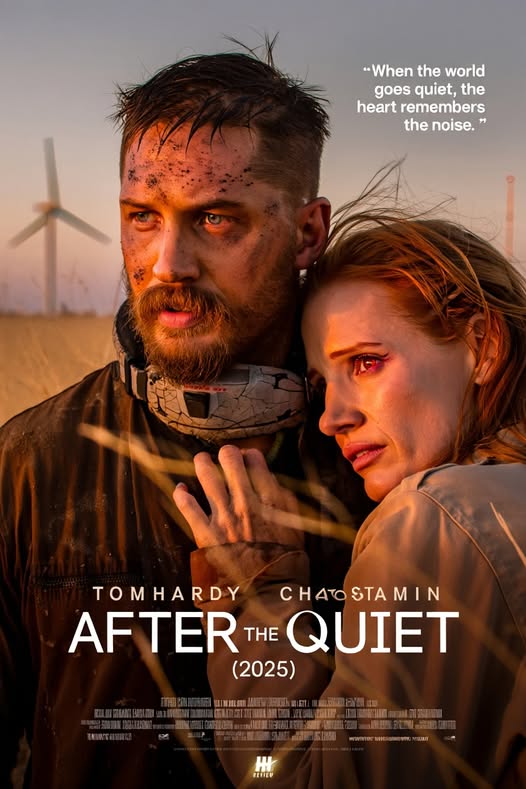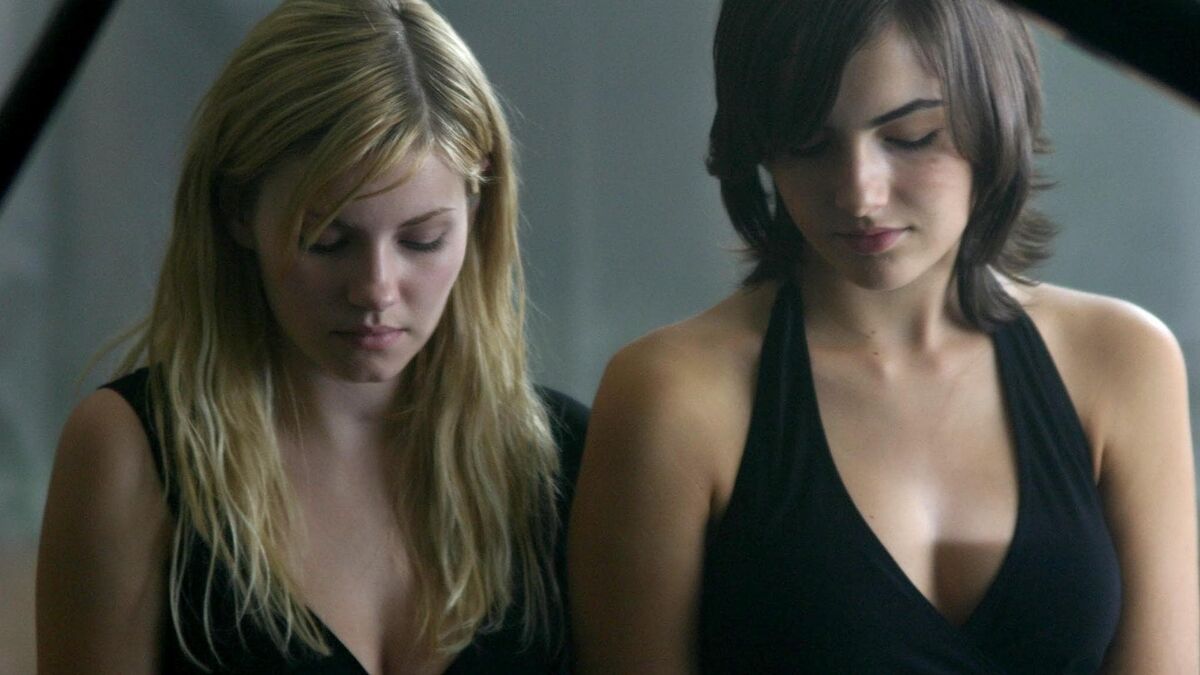🎬 AFTER THE QUIET (2025)

Silence has never sounded so alive. After the Quiet (2025) is not a film about the end of the world — it’s about what remains when the world stops speaking. It imagines a post-apocalyptic Earth stripped of its rhythm, its song, its voice. A place where even the wind has grown tired of moving, and oceans lie flat as mirrors. The apocalypse here isn’t violent; it’s eerily calm — a suffocating stillness that hums beneath the surface of everything left behind.

Tom Hardy’s Eli Roan walks through this world like a ghost haunted not by loss, but by the absence of noise. Once a sound engineer, he now wanders the empty plains with recording gear, searching not for words, but for proof — a pulse in the planet’s silence. His eyes tell us everything: the ache of memory, the need to hear something beyond his own breath. It’s Hardy at his most restrained — a performance built on pauses and quiet strength, a symphony of stillness.
Opposite him, Jessica Chastain’s Mara is luminous, fragile, and deeply human. A linguist who once studied how meaning travels through sound, she now studies what’s left — gestures, glances, the spaces between. Her every movement carries a melancholy grace, as if she’s afraid even her footsteps might disturb what’s sacred. Together, she and Eli become both archaeologists and poets of silence.

Their journey isn’t about surviving the end — it’s about redefining what survival means. Across abandoned cities and endless plains, they record emptiness: the creak of a rusted gate, the sigh of settling dust, the fragile crack of a frozen lake. Each sound, no matter how faint, feels monumental — an echo of something once vast and alive.
Director Rowan Tate (in a career-defining turn) crafts a world that feels at once post-human and deeply intimate. The cinematography stretches vast horizons into emotional mirrors — skies that refuse to move, fields that wait for something unnamed. Every frame feels like a held breath. The absence of sound becomes a kind of music, and the stillness becomes unbearable — until it isn’t.
What separates After the Quiet from other apocalyptic dramas is its courage to do nothing loudly. There are no wars, no monsters, no chaos — only people learning to listen again. The film’s power lies in its restraint: a whisper that says more than a scream ever could.

The relationship between Eli and Mara unfolds like a meditation. There are no declarations, no dramatic embraces — only glances, shared silences, and the way their recordings slowly fill with something like faith. When they finally capture the faint hum of the wind, it feels less like discovery and more like grace.
Mara’s final line — “It’s not gone. It’s just resting.” — lingers long after the credits fade. It’s a benediction, a reminder that even in desolation, life hums beneath the quiet, waiting for someone brave enough to hear it.
Then, in the film’s breathtaking closing image, a single wind turbine creaks to life against a pale horizon. Its slow, painful rotation cuts through the silence like a heartbeat returning. The sound — rough, imperfect, human — swells like hope itself.
After the Quiet is not just a film — it’s an elegy, a prayer, and a rediscovery of silence as something sacred. In its stillness, it asks the most haunting question of all: what does the world sound like when we finally learn to listen?
#AfterTheQuiet #TomHardy #JessicaChastain #CinematicSilence #PostApocalypticElegy
Related movies:
https://www.youtube.com/watch?v=6UphYsbHMU4











